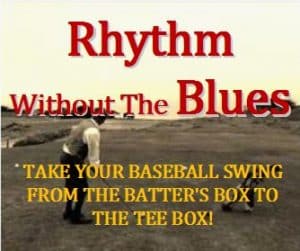THE QATSPY® Quapaw Athletic & Tactical Sportswear Performance Yarak Outfitter’s
INSIDE THE LEATHER HEALTH & FITNESS SPORTS PERFORMANCE
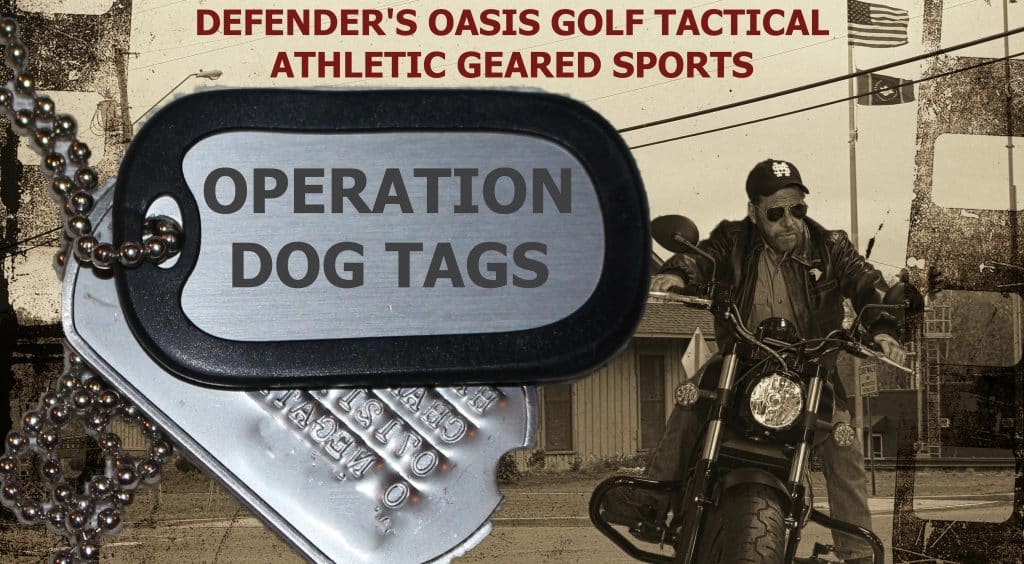
The QATSPY Golfer’s Sports Page: Golf Swing Tips
By: Charles W. Boatright
1.0 Operation DOG TAGS Background and Scope
1.01 Operation DOG TAGS (Defender’s Oasis Golf Tactical Athletic Geared Sports) is an important CBT (Cognitive Behavior Therapy) intervention to help address PTSD. Operation DOG TAGS is intended for use by both civilians and military personnel alike. There are 2.3 million Veterans returning home from the Iraq and Afghanistan Wars, and up to 20 percent of these Veterans will be affected by PTSD (Post-Traumatic Stress Disorder). This represents approximately 460,000 men and women that will have to deal with some form of PTSD.
1.02 PTSD is not a condition that will only affect men. Of all the Veterans that will have to deal with the effects of PTSD, 60.7% will be men and 39.3% will be women. Of the 460,000 cases of PTSD, 7.8% will have long-term effects, where other alternative treatments will be needed to address PTSD.
1.03 The symptoms of PTSD are the physiological effects of the anxiety that will result in, but not be limited to:
- Apprehensiveness
- Powerlessness
- Having a sense of impending danger, panic or doom
- Having an increased heart rate
- Difficulty and rapid Breathing
- Headaches
- Digestive issues
- Sweating
- Trembling
- Feeling weak or tired
1.1 CBT (Cognitive Behavior Therapy) of a Sports-Type Intervention
There is an alternative type of CBT intervention that has provided positive results known as Psychomotor Therapy. This intervention was developed by Albert Pesso, a dance instructor who studied with Martha Graham. This provides coordinated movement that provides both flexibility and balance. While there have been limited clinical studies of Psychomotor Therapy and its effects on PTSD, there have been a large percentage of these patients who have shown significant improvements with CBT and even recovered from PTSD in a relative short period of time, a matter of weeks.
1.11 Sports-Type intervention provides a social structure and physical function that are crucial in both providing a competitive and non-competitive sports and exercises. The chief benefit of using a sports-type intervention is that it involves large skeletal muscle movement. Since balance and stability are key factors in treating PTSD, golf and yoga provide coordination, flexibility, balance, and movement of both high and low threshold muscles, (these are muscles in the limbs and the core).
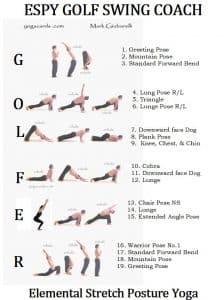
1.12 The golfer must learn to synchronize a series of muscles in a sequence to create a golf swing. This provides an excellent CBT option for people dealing with PTSD to recover in relatively short periods of time, especially in a group setting. The other benefits of incorporating a golf and yoga-type exercise is that it addresses both mental and physical balance and stability, including socialization with others, especially individuals with similar experiences to PTSD.
1.13 Golf and yoga activities have shown evidence that they alleviate symptoms of PTSD by improving a person’s mood, confidence, and build self-confidence, self-discipline, awareness, teamwork, and communication skills. Recovery from a trauma, like PTSD, focuses on re-establishing a daily routine and patterns that includes structure and support from engaging in a group function. This provides the individual with both challenging and rewarding CBT. Group therapy provided by golf and yoga can be more effective than one-on-one type therapy, where no physical accomplishment is realized.

1.14 The significant advantage of golf and basic yoga is they do not require special athletic skills or ability start. These can be acquired with time. Both golf and yoga can be presented in an incremental based training format. Military personnel are very familiar with basic training and advanced training techniques presented in an incremental process, or by-the-numbers. Incremental (step-by-step) training format is the basis of Operation DOG TAGS that includes a simple technique of incorporating a baseball-style golf swing technique and swing mechanics. This baseball-style golf swing technique syncs the golfer’s elbows with their shoulders to create a significant mechanical advantage. This is shown above. This was a similar technique that Arnold Palmer gave President Eisenhower before a Pro-Am that significantly improved the President’s golf game.
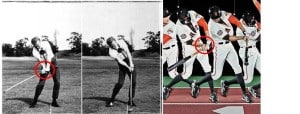
Take your baseball-style golf swing from the batter’s box to the tee box.
1.2 The incremental training used in Operation DOG-TAG
The incremental training used in Operation DOG-TAGS is based on The GOLFER’S BRACHS-PALMER Golf Swing Technique where three simple elements establish the entire golf swing. Two of these elements (pronation and Hinging, called Dorsiflex) are performed daily. The third element is how a baseball batter would take the bat to the top of their swing. The ESPY Golf Swing takes advantage of a well-established muscle memory from the batter’s box and transfers this muscle memory to the tee box with confidence, consistency, and control.

1.21 To enhance these three elements baseball and basic yoga are used to help the golfer maintain focus, which is key to establishing a dependable routine, and maintain fitness, flexibility, stability, and balance for physical and mental control. Sequence and well-established routines are essential components to help one deal with PTSD and establish one’s golf swing. The golf swing is more similar to the baseball swing than they are different. I super imposed my baseball swing over my golf swing to show how similar the wrists action is in both swings, shown below:

1.22 A golfer can enhance their ability to deal with PTSD by incorporating golf and basic yoga elements. Both golf and yoga require both mental focus and physical control through breathing techniques. Breathing techniques are a key factor to control stress and improve performance. Balance, flexibility, stability, and controlled breathing are probably the major factors in dealing with PTSD.
1.23 Robert Trent Jones, Sr., substantiated that golf is mental, this is why Operation DOG TAGS is the basis of one’s mental golf game and as an effective treatment for PTSD, in his quote, Golf is a game that is played on a five-inch course – the distance between your ears. Soldiers, marines, airmen, or sailors are familiar with incremental and sequential training processes that develop second nature-type responses from their basic training. Military personnel have realized that their best performance depends on a second nature-type response, depending more on natural reflexes and less on having to think through each process each time. If the golfer wants to negatively impact their golf game, just let the golfer start thinking about their golf swing.
1.24 Operation DOG TAGS uses the same training process as a second nature-type response to execute the golf swing. The GOLFER’S BRACHS-PALMER Golf Swing Technique provides a basis for a consistent and repeatable golf swing built on three aspects of a second nature-type performance, building a routine to establishing confidence and developing muscle memory.
1.3 Cognitive Automatic Response Sequence (CARS) process
Operation DOG TAGS training is a Cognitive Automatic Response Sequence (CARS) process. This allows the golfer to develop a self-coaching process and automatic response method, based on training and practice that resemble actual playing conditions. Operation DOG TAGS and The GOLFER’S BRACHS-PALMER Golf Swing Technique allows the golfer’s mind not be able to distinguish between their training and course play, which is a problem with most training systems. This is according to Rule No. 7 of the Subconscious Mind. Rule No. 7- The subconscious mind always prevails in conflicts with the conscious mind.
My Orange Bucket Challenge to Create Course Like Conditions
I was contacted by a local television station to do a three (3)- part video series of my golf swing techniques for their Sports Show leading up to the 2021 US Open. I did a three (3)- part video series of my Orange Bucket Challenge that I and my student do during our practice/training sessions. Below is the raw video and the a promotional video that they produced for me for doing the three (3)- part videos:
Orange Bucket Challenge
THE Orange Bucket Challenge Link INTRO
The Orange Bucket Challenge Walk-Through
The Orange Bucket Challenge Demo
WJTV-12 made an AD from the 3- Video Series Above
I did a 3- Part Video for WJTV-12 SPORTS ZONE Show leading up to the 2021 US Open where I cover my golf training technique of taking my golf swing from the Batter’s Box to the Tee Box to hit more Fairways & Greens in regulation or better. As appreciation for me doing this 3-part video series, the WJTV-12 production team put together a Television promotional that they ran and that I could use in my golf training business.
1.31 The best example of the CARS process is what a driver experiences on a familiar stretch of road or scenic highway. This condition is called ‘Driving Hypnosis’ or ExtraSensory Performance Zone (ESPZ) Driving. What occurs in ESPZ Driving is that the conscious mind focuses on something other than driving, allowing the subconscious mind to take over the majority of the driving tasks which is depending on a second nature-type response. This is key for the golfer to use in their golf game. The last thing the golfer wants to do is to think about their swing techniques and mechanics.

1.32 Drivers experiencing ESPZ Driving don’t recall driving passed certain sections of a highway or landmark, but still arrive at their destination or over a five-mile stretch of highway safely. While ESPZ Driving is unsafe for driving a vehicle down the highway, it works great for driving a golf ball down a fairway and onto the green. This creates what athletes refer to as Performing In the Zone. The first description that the athletes use to refer to Zone-type performance is how time seems to slow down. This is a key factor in developing CARS.
1.33 Operation DOG TAGS takes four (4) conditions that cause ESPZ Driving to occur and trains the golfer’s mind on how to get into this ZONE. Wade Boggs, in an interview with staff writer Tom Jones with Saint Petersburg Times, described how he was able to mentally slow down a 95-mph fastball, where he could actually see the MLB emblem and stitching on the baseball. Wade Boggs ranks 33rd in career batting average of 0.328. (Ty Cobb is first, with a career batting average of 0.366.) The reason that Boggs gave in the interview was his ability to heighten his focus was by applying three simple steps, the same steps that cause ESPZ Driving and CARS. These are:
-
- Develop Natural and Repetitive Routine tasks.
- Practice and perform under actual conditions that must exist in both.
- Rely on a high degree of: relaxation, confidence, and muscle memory.
- Allow the Subconscious mind to takeover and Dominate the conscious mind, or being IN THE ZONE.
1.34 Operation DOG TAGS takes advantage of establishing a routine under similar performance conditions on the course. Developing dependable muscle memory for confidence and relaxation is where one can shift the conscious mind’s focus and trust one’s subconscious training, or second nature-type response. This incremental training has to be done under similar conditions as to how the golfer will play on the course.
1.35 Operation DOD TAGS uses ten fundamentals of how the subconscious mind functions and allows the golfer to directly apply these fundamentals to their golf game and to deal with PTSD.
Section 2 deals with the Operation DOG TAGS Objectives of using golf as a Cognitive Behavior Training for PTSD and developing one’s golf game.
Squad- Foursome
Platoon- 12 person Team Level
Camp- 36- 72 person Club Level
NOTE: In the event where membership exceeds 72 for a Camp, two (2), or three (3) Camps can be form. The objective is to keep Camps where presidents, Captains, and Leaders can keep in touch with their members for personal support.
I would like to dedicate Operation DOG TAGS to Colonel Robert C. Boatright who served his country in World War II, Korea, and the Vietnam Wars.

To set up your own Operation DOG TAG golf squad, Platoon, or Company and improve your golf game, purchase your copy of The ESPY Golf Swing Coach from the links below, or visit your local bookstore:
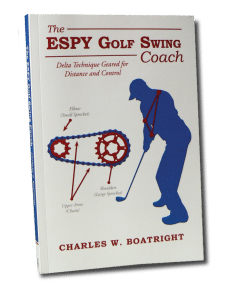
820 East County Line Road, Ridgeland, MS 39157
My book can also be purchased on-line at:
Amazon.com
Barnes & Noble
This book is a self-coaching forum that provides basic and advanced fundamentals to help you play golf with confidence and start lowering your handicap.
Please take advantage of my DELPHI DIET & FITNESS System, where I lost 6 inches in my waist in 3- months along with the CAST Workout Program, detailed that are in my QATSPY® Health & Sports Hangar:
Please include an exercise routine in your weekly schedule.
Also, learning The ESPY Golf Swing Coach process is an excellent way to develop Rhythm without experiencing the Blues in your golf game, learn how to take your baseball-style swing from the batter’s box to the tee box: https://goo.gl/olwgxG


